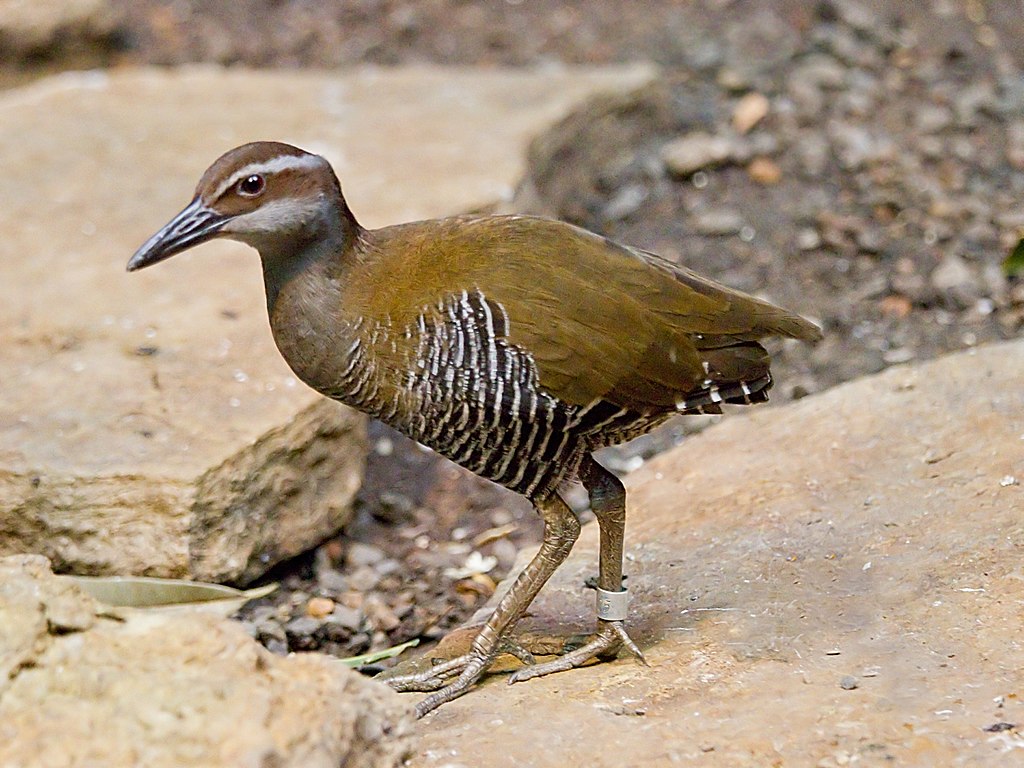Rail successfully recovers from extinction in the wild
This year's update to the IUCN Red List of Threatened Species has been announced, with one of the headlines that Guam Rail has become only the second bird ever to recover from extinction in the wild.
The first was California Condor, but in this year's update Guam Rail follows in the footsteps of the much-celebrated bird of prey. Once widely distributed across the island of Guam in the western Pacific, this fast-running, flightless bird plummeted following the accidental introduction of Brown Tree Snakes by a US military cargo ship at the end of World War Two.

Guam Rail is only the second bird to ever recover from extinction in the wild (Greg Hume / wikimedia.commons.org).
This invasive predator has since profoundly changed the island's ecosystem, driving three endemic bird species to extinction and threatening several others with the same fate. In 1987, in a last-ditch bid to protect it, the final 21 Guam Rails were taken into captivity.
Today, thanks to a 35-year captive breeding programme, a small population is now firmly established on neighbouring Cocos Island, where snakes are absent. However, as Cocos Island is just 38 hectares, the population size is likely to remain extremely small, so the species is still classed as Critically Endangered.
In Mauritius, Echo Parakeet continues its recovery thanks to conservation action, including a highly successful captive breeding and translocation project. There are now more than 750 parakeets in the wild, and this year the species has been reclassified as Vulnerable, following its improvement from Critically Endangered to Endangered in 2007.
This success follows hot on the heels of the Pink Pigeon, another Mauritian bird, which last year was recategorised from Endangered to Vulnerable thanks to a captive breeding programme, having bounced back from a population which numbered, at one point, just nine birds.
"The recovery of Guam Rail and Echo Parakeet is fantastic proof of how effective targeted conservation action can be," says Dr Ian Burfield, BirdLife's Global Science Coordinator for species. "However, it is important to remember that not all species can be brought back from the brink, especially if their natural habitat has been destroyed. The priority should always be conserving habitats to prevent declines and extinctions from happening in the first place."

Echo Parakeet has been reclassified as Vulnerable, following its improvement from Critically Endangered to Endangered in 2007 (Martin Bond).
As if to drive this message home, Spix's Macaw has this year been officially reclassified as Extinct in the Wild, along with three other species now considered to be extinct. Two of these three extinctions took place in Brazil's dwindling Atlantic Forest – reflecting the devastating effects of deforestation in this part of the world.
BirdLife's work in South America's Atlantic Forest is striving to secure the last vestiges of this precious habitat to prevent any further extinctions. The heat is on, however – this year, Banded Cotinga was uplisted to Critically Endangered due to severe deforestation. Fortunately, BirdLife Partners across Brazil, Argentina and Paraguay have united on a major project combining nature reserves, ecotourism and sustainable farming to ensure the forest's long-term protection.

